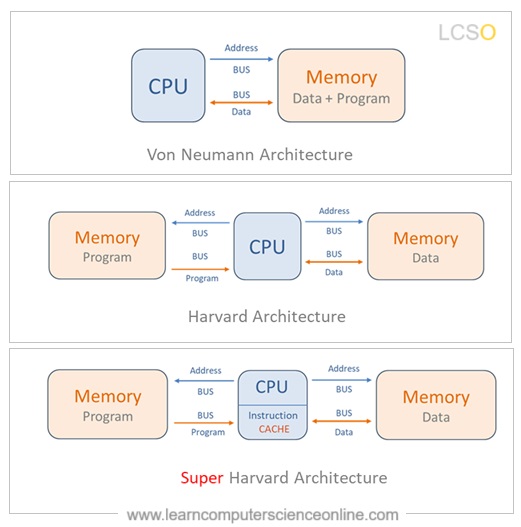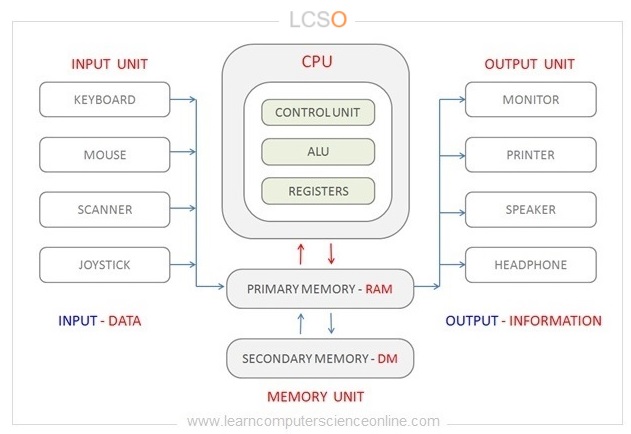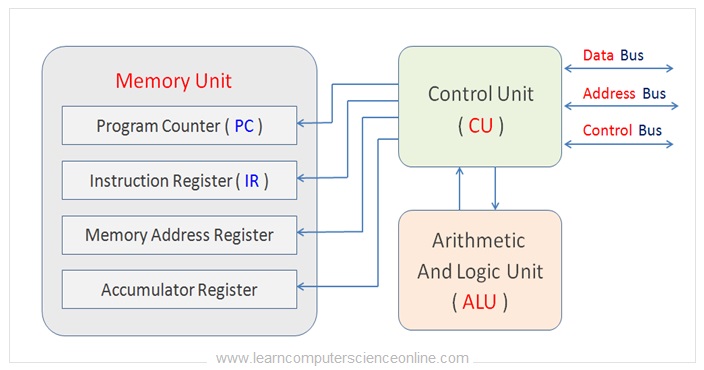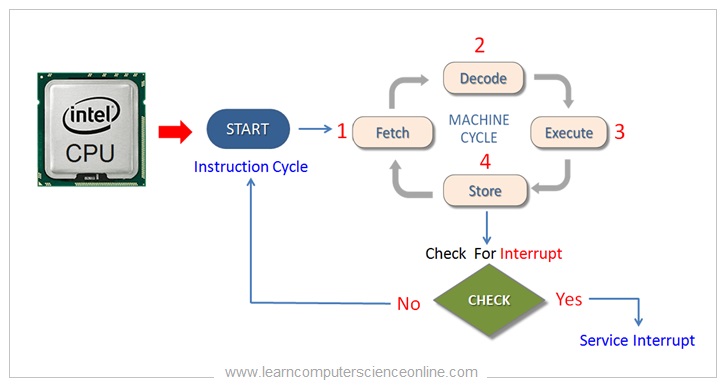
Von Neumann Architecture
Complete Beginners Guide To Fundamentals Of Computer Science.
Von Neumann Architecture, named after mathematician John von Neumann, is the foundational design principle for modern computers. This Architecture is also referred to as stored memory architecture.
It separates a computer’s memory and processing unit (CPU), allowing program instructions and data to be stored and processed independently. In this architecture, program instructions and data are stored in the same memory space (Main memory RAM), facilitating seamless interaction between the CPU and memory.
The CPU fetches, decodes, executes, and stores instructions in a sequential manner, creating a cycle known as the Von Neumann cycle (Instruction Cycle). This architecture revolutionized computing by introducing a modular and scalable design framework, enabling the development of versatile and efficient digital computers used in various applications.
Introduction To Computer Science

In the realm of computer science and engineering, few concepts have had as profound an impact as Von Neumann Architecture. Named after the Hungarian-American mathematician and physicist John von Neumann, this architectural framework serves as the blueprint for the design and operation of modern digital computers.
From desktop PCs and laptops to smartphones and supercomputers, Von Neumann Architecture forms the foundation upon which the digital revolution has been built. In this comprehensive guide, we’ll explore the intricacies of Von Neumann Architecture, its components, operation, historical significance, and relevance in today’s computing landscape.
Computer Functions - Block Diagram

What is Architecture in Computer Science ?
In computer science, architecture refers to the fundamental design principles and structures of a computing system or software application. It encompasses the organization, interaction, and arrangement of hardware components, software modules, and system resources to achieve specific functionality and performance goals.
Computer architecture focuses on the design of hardware components such as the central processing unit (CPU), memory, input/output (I/O) devices, and interconnection networks. Software architecture, on the other hand, deals with the design of software systems, including the organization of code modules, interfaces, and data structures.
Introduction To Computer System Video Tutorial
Architecture influences various aspects of a computing system, including its performance, scalability, reliability, and maintainability. Understanding and designing effective architectures are crucial for building robust and efficient computer systems that meet the requirements of modern applications and users.
Understanding Von Neumann Architecture
At its core, Von Neumann Architecture embodies a fundamental principle: the separation of program instructions and data from the Central Processing Unit which is a hardware component that execute them. This separation allows for greater flexibility, efficiency, and scalability in computer systems. The key components of Von Neumann Architecture include:
Components Of Von Neumann Architecture

- Central Processing Unit (CPU): The CPU is the brain of the computer, responsible for executing program instructions and performing arithmetic and logic operations. It is CPU that provide processing power to the computer.
- Computer Memory: The computer main memory RAM is the storage area where program instructions and data are stored temporarily during the program execution. In Von Neumann Architecture, memory is unified, meaning that both program instructions and data are stored in the same memory space.
- Input/Output (I/O) Devices: Input devices accept user inputs and output devices provide output in the desired format to the user. Peripheral devices such as keyboards, mice, monitors, and storage devices that allow users to interact with the computer and exchange data with the outside world.
- Control Unit: The CPU consists of ALU (Arithmetic Logic Unit) and Control Unit (CU), two key components. The component of the CPU that coordinates the execution of program instructions, fetches instructions from memory, decodes them, and controls the flow of data within the system.
Operations Of Von Neumann Architecture
The microprocessor operations based on the Von Neumann Architecture can be summarized in four basic steps. This sequence of steps is called an Instruction Cycle. The processor repetitively performs these steps during the program execution:

- Fetch: The CPU fetches the next instruction from memory, using the program counter (PC) to determine the address of the instruction.
- Decode: The CPU decodes the instruction, determining its type and operands.
- Execute: The CPU executes the instruction, performing the specified operation (e.g., arithmetic operation, data transfer) on the data stored in memory or registers.
- Store: The result of the execution is stored back in memory or in a register for future use.
Historical Significance Of Von Neumann Architecture
The development of Von Neumann Architecture marked a significant milestone in the history of computing. Prior to its introduction in the mid-20th century, computers were primarily designed using ad-hoc architectures with limited flexibility and scalability.
Von Neumann Architecture revolutionized the field by introducing a modular and scalable design framework that separated program instructions and data from the underlying hardware. This innovation laid the groundwork for the development of modern digital computers and paved the way for advancements in computer science, engineering, and technology.
